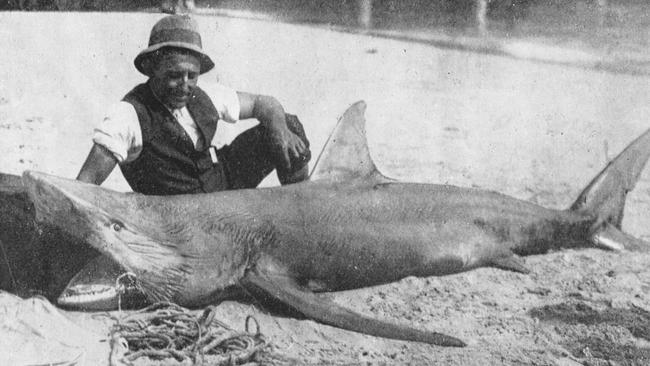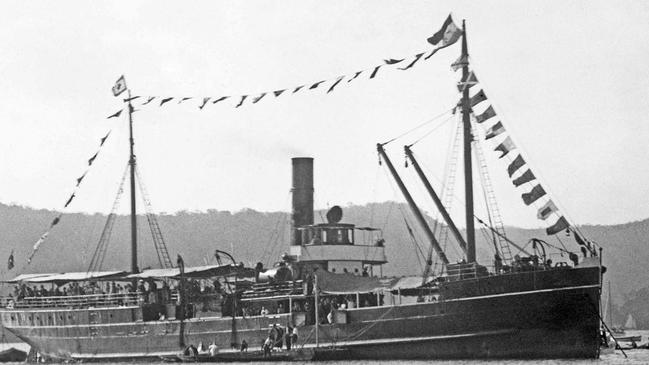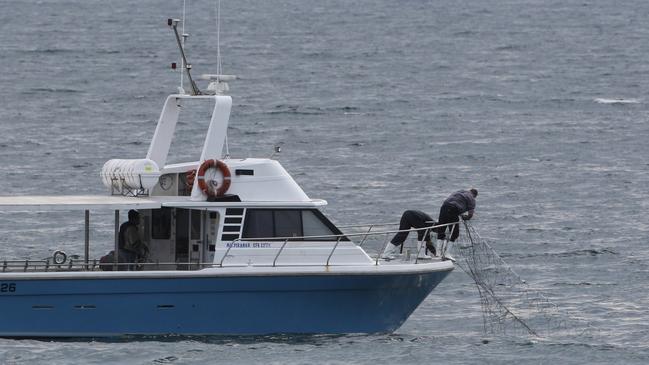When the fear of shark attacks led to the start of meshing
THERE was a time when people weren’t concerned about the economics of shark meshing, let alone the ethics – only the presence of sharks off Sydney’s beaches and the fear of being attacked by one.

- How Newport Lagoon was destroyed
- What happened to the footbridge across Dee Why Lagoon
- The oldest surviving radar site in Australia is at North Head
- The history behind the guns at West Head
ON March 1, 1938, residents of Seaforth and Clontarf were appalled to see the rusting hulk of an old steamer, accompanied by a fleet of small launches, drop anchor off Fisher Bay and in full sight of their homes.
The 61m hulk was that of the former Hunter River steamer Archer, which was the “mother ship” to a small fleet of boats engaged in the shark-meshing program off Sydney’s ocean beaches, which had begun the previous year.

For the Archer, being used as a hulked mother ship was a huge fall from grace, having been built as a two-masted screw passenger and cargo steamer in Scotland in 1882, sailed under its own steam to Australia and used by various companies on the east coast of Australia.
And anyone who had seen the Archer 13 years prior to its arrival off Clontarf would have struggled to recognise the vessel that the Newcastle and Hunter River Steam Ship Company had made available to the organisers of the 1925 Pittwater Regatta as the flagship for the day.

Since then the Archer had been hulked – stripped of anything of value – and was being used by the shark meshing contractor, Cranwin Fisheries, for treating its catch of sharks for anything of value.
The Archer had been moored in Kerosene Bay, now called Balls Head Bay, since Cranwin Fisheries had been awarded the contract in September 1937 to mesh for sharks off the Sydney coastline.
Cranwin Fisheries had been formed for the sole purposes of shark meshing and the treatment and sale of shark by-products.
Oil extracted from the shark’s liver was said to be as valuable as cod liver oil.
Shark skin, commercially known as shagreen, could be used to make handbags, shoes, belts and other leather goods.
The shark’s teeth also had commercial value, the fins could be sold to Chinese restaurants to make shark-fin soup and what was left of the carcass could be made into fish meal for poultry food or into fertiliser.

At the time the meshing program began, however, Sydneysiders weren’t concerned about the economics of shark meshing, let alone the ethics – only the presence of sharks off Sydney’s beaches and the fear of being attacked by one.
Between 1922 and 1929, there were eight shark attacks on the southern beaches of Sydney – five of them fatal – but none along the northern beaches.
Then it was the turn of the peninsula.
In the space of two years there were five shark attacks on the north side – four of them fatal.
As a result of public pressure, the State Government established the Shark Menace Advisory Committee in August 1934 to investigate the various methods of protecting bathers and to recommend the most practicable and affordable one.
In January 1935, the committee recommended that the government subsidise a meshing program along the Sydney coastline between Port Hacking and Barrenjoey Head to be carried out by contractors.

The committee’s conclusions were not met with unanimous approval – some said constructing shark-proof enclosures was the only way of ensuring the safety of bathers, no matter the cost, while others questioned how the contractor would dispose of the carcasses of the sharks caught in the nets.
Some even pointed out the bleeding obvious – that the chance of being eaten by shark was lower than the chance of dying from bee stings, let alone the chance of dying on the roads.
At that early stage in the meshing program, few considered the ethics of killing sharks at all, along with the other marine animals that were caught in the nets.
And in 1938, all the residents of Clontarf wanted was to be rid of the ugly, smelly “factory ship” – the Archer – and its attendant fleet of small boats, some of which were used as living quarters by men who worked for the company.
On March 2, 1938 – the day after the arrival of the Archer and its small flotilla – Manly Council health inspector Sydney Scott-Young wrote to the Town Clerk that one of the Archer’s hawsers was attached to a tree on the council’s reserve at Clontarf and that “the night soil, garbage and trade waste arising from this hulk and its attendant launches will pollute the waters and foreshores of Middle Harbour generally and more particularly those in the vicinity of Clontarf and The Spit.”

The Harbour Master told Manly Council that the Archer was “legally occupying its present mooring with the sanction of the Maritime Services Board, that she is not yet fitted with the necessary digesters for treating sharks and that she is moored in Fisher Bay for the reason that that locality is considered safe and most easily accessible for launches bringing in their catch.”
The Harbour Master also said the hawser had been removed from the tree and a concrete mooring had been sunk to which the stern of the Archer was attached.
A representative of the Cranwin Fisheries said that it was intended that the hulk should be used only as a depot ship for gear and boats, and that it would not be decided for some months whether dead sharks would be treated in the hulk or not.
But the residents of Clontarf were having none of it – they wanted the Archer gone, and quickly.
Within a 10 days the Archer had been ordered by the Maritime Services Board to move to Oyster Cove, near Waverton, sparking a backlash from North Sydney Council similar to that of Manly Council.
The fact was that no one wanted the Archer in their backyard.
One Sydney newspaper likened the Archer to the Flying Dutchman, the mythical ghost ship that could never make port and was doomed to sail the seas forever.
But economics again entered the debate – the more sharks that were caught, the fewer that were left to be caught, so the perceived value of the shark population diminished each time one was caught.

There was talk by the State Government of establishing a fish factory at Newcastle but Cranwin Fisheries said taking the shark carcasses that far north would be uneconomical.
In the end, the sharks’ carcasses were dumped at sea, just as they are now, except that the contractor for today’s meshing program must take the carcasses at least three nautical miles (5.6km) from the coast and the carcass “must be prepared in such a manner as to cause the carcass to sink”.
No part of the sharks, including skins, jaws or teeth, are allowed to reach land.
As for the Archer, it was also dumped at sea – it was scuttled off Sydney on January 10, 1946.
